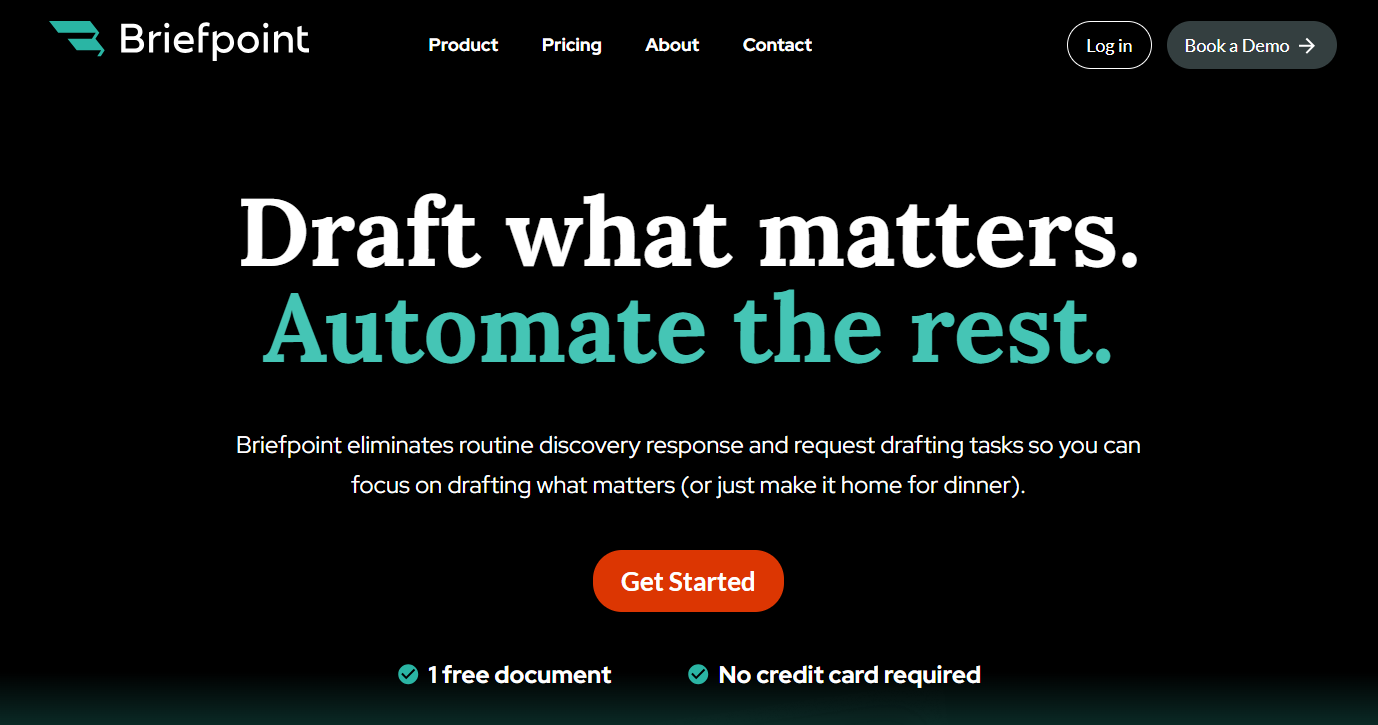What is Motion To Compel? (Checklists and Guides)
What is Motion To Compel? (Checklists and Guides)

Legal parties aren’t always cooperative. While the law might state they must supply information to you before a trial, they can be noncompliant.
These tactics are understandable, but they don’t always fall within the scope of the law. Parties may be breaching proper procedures and could face court sanctions, such as the imposition of legal fees or contempt of court charges where noncompliance persists.
Motion-to-compel tools are essential for ensuring justice. These assist with information discovery by getting the court to force the opposing side to release data pertinent to the case. Understanding how to use these effectively can thwart other parties and force them to submit legally required information.
When To File A Motion To Compel
Filing a discovery motion or motion to compel becomes necessary when the responding party fails to meet their discovery obligations. If you’re not getting the information you’re entitled to, and informal efforts haven’t worked, a motion to compel may be your next step.
Parties Are Unresponsive To Interrogatories
If the opposing side ignores your interrogatories or provides vague, incomplete answers, it can stall your case preparation.
Without proper responses, you’re left in the dark, unable to fully assess your position or build a solid strategy. This kind of noncompliance isn’t just frustrating; it can seriously jeopardize your client’s chances in court.
As the moving party, you’re asking the court to step in and require the other side to comply with the rules. A motion to compel makes it clear that discovery isn’t optional and that delays or evasions won’t be tolerated.
If the responding party fails to answer interrogatories or respond with valid legal objections, the court may order them to produce the information and, in some cases, impose sanctions for failing to meet their discovery obligations.
Parties Won’t Produce Documents
When the other party fails to provide requested documents, filing a motion to compel discovery responses may become unavoidable. This type of noncompliance can throw off the entire case timeline and affect the fairness of the proceedings.
Here’s why a motion may be necessary in these situations:
- Missing documents can distort the facts – Without access to complete records, you’re working with half the story.
- It delays case resolution – Waiting on paperwork from an uncooperative party slows everything down.
- It undermines the discovery process – Parties are expected to respond honestly and thoroughly to all discovery responses.
- It opens the door to misconduct – When one side withholds information, it gives them an unfair tactical advantage.
- It weakens legal arguments – Without key documents, you may be unable to support your claims or defenses effectively.
If the other party refuses to comply even after informal efforts, the moving party can ask the court to order compliance. A well-drafted motion with clear legal arguments can push the court to act and protect the integrity of the process.
Parties Are Deliberately Obstructing Information Discovery
Sometimes, one party takes deliberate steps to stall or block the discovery process. This could involve making excessive objections, refusing to turn over documents, or generally disrupting attempts to gather relevant information.
In both civil and criminal discovery, these tactics can prevent a fair outcome and waste valuable time.
If a non-complying party is intentionally obstructing the process, filing a motion to compel may be the only way to move forward.
But before doing so, courts often require good faith efforts to resolve disputes—this means reaching out to the other side, attempting to work things out, and documenting your efforts.
You’ll typically need to include a separate statement detailing each disputed item, your attempts to resolve the issue, and why the information is relevant. You’ll also need to request a hearing date with the court so both sides can present their positions.
For example, if an attorney refuses to produce financial records after repeated requests, claiming irrelevant privilege with no legal support, a motion to compel, supported by a clear paper trail, can pressure them to comply or risk court sanctions.
How To File A Motion To Compel
If the opposing side isn’t cooperating or you suspect they’re hiding crucial evidence, you may need to file a motion to compel. It’s a way for the requesting party to ask the court to enforce compliance with the requested discovery, especially when the other side is avoiding their responsibilities.
But this process isn’t automatic; it requires careful steps to stay within procedural rules. Here’s what to do:
Meet And Confer With The Opposing Party
Before taking your issue to court, you’re expected to try resolving it informally. That means reaching out to the opposing side to meet and confer. This step shows the court that the requesting party made good faith efforts to work things out without legal intervention.
You should clearly address the missing discovery materials, explain what’s incomplete or missing from all the responses, and request timely correction. Be sure to document this meeting thoroughly; include the date, the topics discussed, and any follow-up communication.
Courts often won’t consider a motion to compel unless you’ve attempted to resolve the issue first. This step is your foundation for showing the court you’ve done your part before asking for formal enforcement.
Prepare Your Motion To Compel
If parties still fail to comply with your discovery requests, you should prepare a motion to compel. Ensure you follow established formats to avoid confusion or rejection for failing to provide the correct information.
A motion to compel contains:
- The name of the court
- The docket number
- The names, addresses, and details of the parties involved
- A summary of the case that provides context
- A list of discovery requests that the opposing party did not comply with
- A list of accompanying reasons explaining any non-compliance
- Reasons why the court should support discovery
The last element is critical. Courts will only issue a motion to compel if you can provide reasonable cause for the opposing party to comply with your request.
Acceptable reasons courts may accept include things like:
- Failure to release medical records relevant to a case
- Failure to supply expert deposition questions
- Getting in the way of discovery by abusing the rules of conventional legal proceedings to cause delay or incur higher costs on the opposing party
- Failure to take part in depositions
- Failure to supply documents relevant to the case
The more accurate you can make your objective, the more likely the court will grant your motion to compel. Whatever reason you choose must align with the circumstances of the case.

Serve The Motion
After the party files the motion to compel, the court begins reviewing the request and evaluating any objections raised by the other side. This is a critical part of the legal process, especially during the discovery phase, where access to complete information can shape the outcome of a case.
You can typically serve the motion electronically, as most courts accept e-filing. That said, some jurisdictions may still allow or require physical copies. No matter the method, you must serve a copy to the opposing party’s law office to keep the process fair and transparent.
During this stage, both parties may have the opportunity to present arguments. The court will review the facts and decide whether the motion is justified.
If the court rules in your favor, it may not only order the production of documents or answers. It could also require the opposing side to pay attorney’s fees for forcing the motion.
Serving the motion properly and on time keeps your case on track and helps avoid unnecessary delays or dismissals.
Go To The Hearing
If the opposing party still refuses to comply after being served, you may need to appear before a judge. A hearing allows both sides to present their case, and the judge will decide whether the court’s intervention is necessary to compel compliance.
At this stage, the requesting party must show that they made a good-faith attempt to resolve the issue outside of court. This typically includes proof of your confer efforts with opposing counsel, where you tried to settle the dispute without involving the court. Documentation of emails, call summaries, or letters can support this.
In some jurisdictions, you may need to file two separate motions—one addressing the failure to respond and another requesting sanctions. Make sure your formal request is clear and tied to the original propounded discovery, showing exactly what was not answered and why it matters to the case.
The hearing is your chance to explain why the court should step in. If successful, the judge may order the other side to respond fully.
Defending Against A Motion To Compel
However, sometimes, you will be on the receiving end of a motion to compel. When this happens, you may find yourself being asked to provide information that conflicts with your clients’ rights or falls outside of the purview of the case.
Fortunately, you can also defend against these motions, helping to protect your client against unjustified intrusions. Here’s what to do:
Talk To The Opposing Party
As described above, one option is to “meet and confer” with the opposing party. Talking to them can sometimes help you resolve the issue without going through any formal court procedures.
When meeting with the other side, record all relevant information, including talking points and any agreements reached.
Identify Objections
Review the motion carefully. The requested discovery may be too broad, not relevant, or even protected under privilege. You’re entitled to object, but those objections must be clear, legal, and well-supported.
This is where tools like Briefpoint can help. Briefpoint uses artificial intelligence to analyze propounded discovery and suggest well-grounded objections based on similar case law.
It speeds up the process by highlighting legal issues, offering suggested language, and even allowing you to insert objections into documents with a click. You can also customize responses or use pre-built templates to align with your case strategy.
Once your objections are finalized, file them with the court along with any necessary declarations. If the court agrees, it may deny or limit the motion to compel, helping you protect sensitive or irrelevant information.
Carefully Read The Motion
Before you respond, take time to carefully read the motion to compel. Don’t skim—go line by line. Understanding exactly what the propounding party is asking for can help you craft a more focused and accurate response.
Sometimes, the language in a motion can make it seem like they’re asking for invasive or overly broad requested information, but a closer read may reveal something more limited or specific. Misunderstanding the scope could lead to unnecessary concessions or weak objections.
Look closely at how the motion aligns with civil procedure rules. Are they citing the right statutes? Did they include all required supporting documentation? Has the motion been filed correctly and timely?
AI tools can speed up this review. They can flag overbroad language, missing context, or irrelevant demands, helping you respond with stronger objections. Some platforms even let you click to insert objections directly into a verified response, saving time and reducing the risk of error.
File Your Response
Once you’ve reviewed the motion and prepared your objections, it’s time to formally respond.
File your response with the court, explaining why the motion to compel is improper or why the requested information falls outside the bounds of discovery rules. Your documentation should be clear, well-organized, and backed by legal reasoning.
Be sure to include all necessary attachments, such as a declaration detailing your informal resolution efforts, any prior correspondence with the other party, and other evidence, such as a service form confirming that your response was properly served on opposing counsel.
If the court schedules a hearing, make sure you attend. Showing up gives you the chance to explain your objections directly and reinforce why an order compelling further discovery isn’t warranted. Skipping it means losing your opportunity to be heard.
Be Prepared To Compromise
Finally, you may need to compromise with the opposing party to avoid going to court in some cases. This tactic might involve disclosing some information while protecting other sensitive data.
Automate the Discovery Process Without Waste
A motion to compel can either move your case forward or put you on the defensive. Whether you’re filing one or responding to it, understanding the legal process, meeting all procedural requirements, and presenting strong arguments are key to protecting your client’s interests during the discovery phase.
But handling discovery disputes doesn’t have to drain your time.

Briefpoint can help you draft discovery responses, identify valid objections, and manage supporting documentation; all in minutes, not hours. Its AI-powered platform is built for lawyers who want to save time without sacrificing precision.
Want to handle discovery smarter? Try Briefpoint and take the hassle out of motions to compel.
FAQs About What is a Motion to Compel
What is the purpose of a motion to compel?
A motion to compel is used to ask the court to require a party to provide discovery responses or documents they’ve failed to produce. It ensures both sides follow the rules during the discovery phase and prevents one party from withholding relevant information.
Is a motion to compel a bad thing?
Not necessarily. It’s a legal tool to resolve discovery disputes. While receiving one might feel confrontational, it’s often part of the normal back-and-forth in litigation. Filing or responding to a motion to compel is about keeping the process fair and moving forward.
What happens if someone ignores a motion to compel?
If a party ignores a motion to compel and the court grants it, they may be ordered to comply and possibly pay sanctions, including the other party’s attorney’s fees. Continued refusal could lead to harsher consequences, like being held in contempt of court.
What does “compel” mean in legal terms?
To “compel” in legal terms means to request the court’s authority to force a party to act, typically to provide evidence, answer questions, or comply with a discovery request. It’s about requiring legal compliance when cooperation breaks down.
The information provided on this website does not, and is not intended to, constitute legal advice; instead, all information, content, and materials available on this site are for general informational purposes only. Information on this website may not constitute the most up-to-date legal or other information.
This website contains links to other third-party websites. Such links are only for the convenience of the reader, user or browser. Readers of this website should contact their attorney to obtain advice with respect to any particular legal matter. No reader, user, or browser of this site should act or refrain from acting on the basis of information on this site without first seeking legal advice from counsel in the relevant jurisdiction. Only your individual attorney can provide assurances that the information contained herein – and your interpretation of it – is applicable or appropriate to your particular situation. Use of, and access to, this website or any of the links or resources contained within the site do not create an attorney-client relationship between the reader, user, or browser and website authors, contributors, contributing law firms, or committee members and their respective employers.